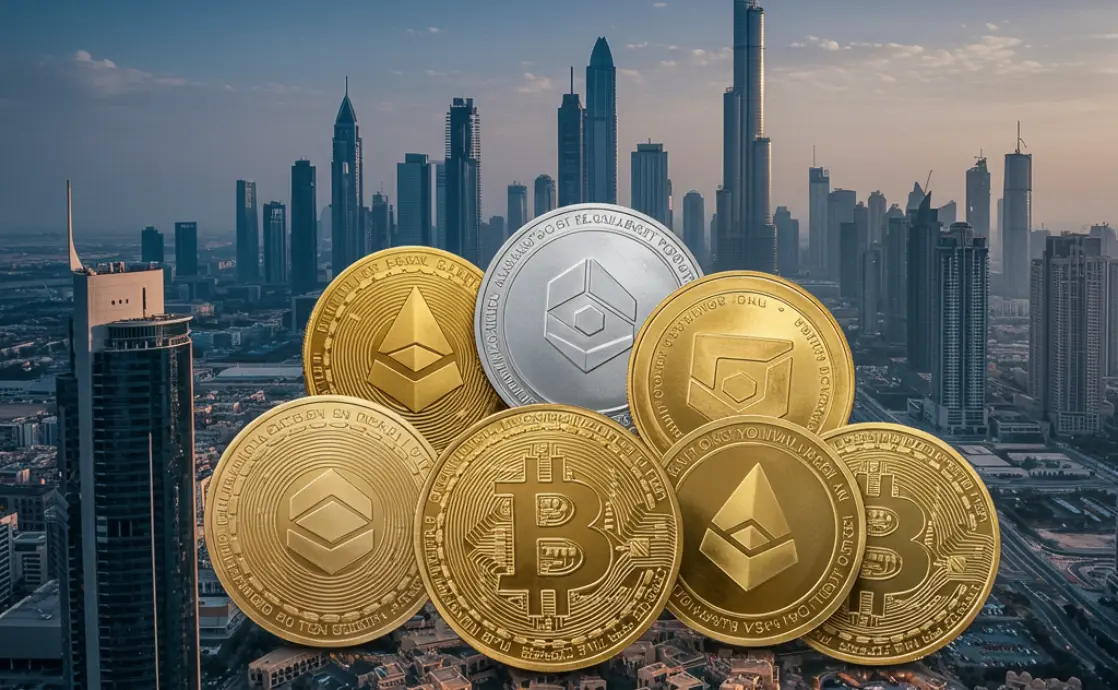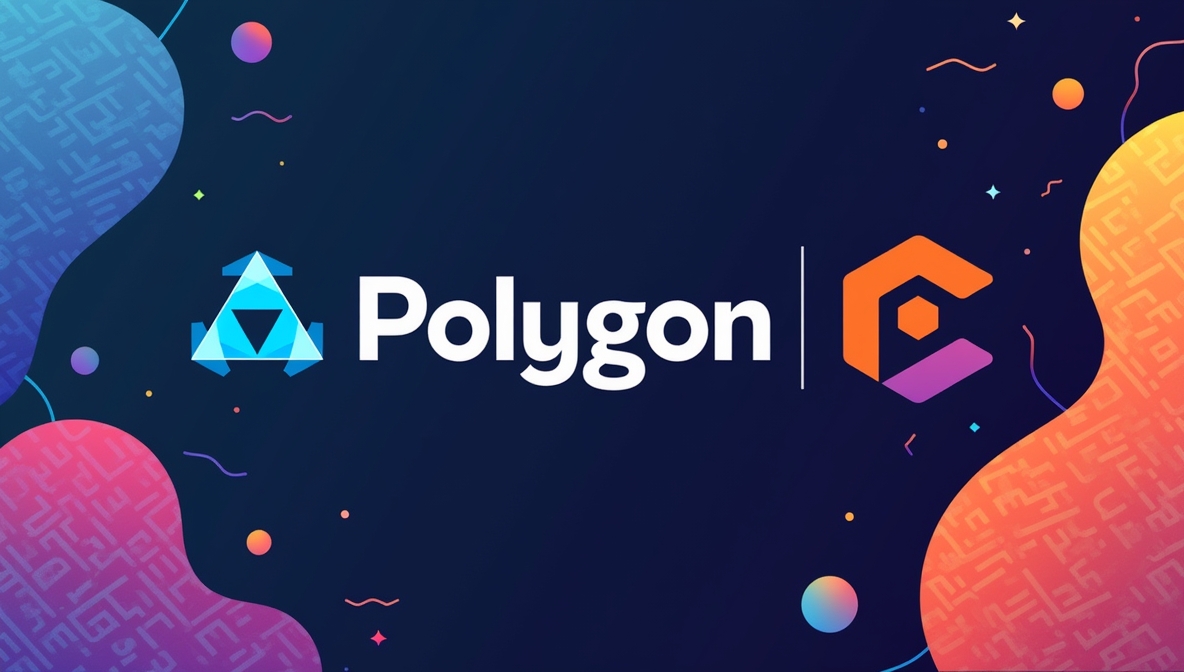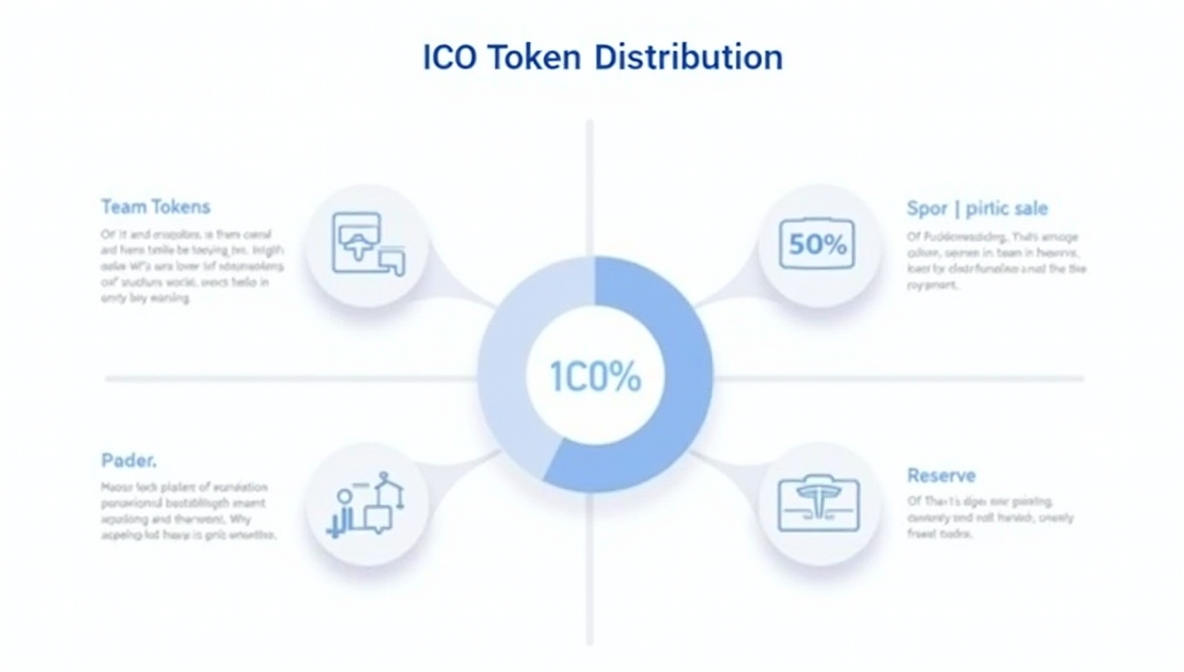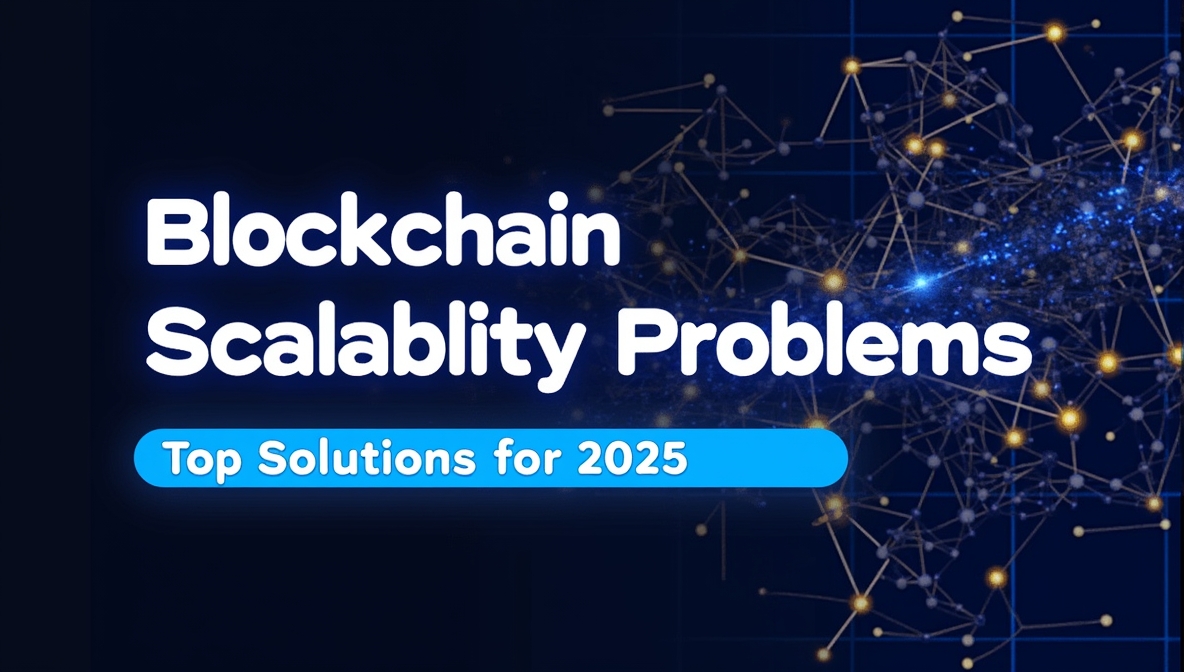Asset tokenization is rapidly transforming the financial landscape, offering groundbreaking opportunities for liquidity, accessibility, and transparency. However, this innovation comes with a unique set of challenges that must be navigated to unlock its full potential. In this comprehensive guide, we delve into the primary obstacles facing asset tokenization and provide actionable solutions to overcome them. Whether you’re an investor, entrepreneur, or financial professional, understanding these asset tokenization challenges will empower you to make informed decisions in the evolving world of digital finance.
Introduction: Unlocking the Future of Finance But Not Without Challenges
Imagine owning a fraction of a luxury property, a rare piece of art, or even a high-yield corporate bond with just a few clicks. Sounds futuristic? Thanks to asset tokenization, this future is already here, revolutionizing the financial world. However, behind the promise of increased liquidity, accessibility, and transparency lie significant asset tokenization challenges that demand attention.
Asset tokenization, the process of converting physical or traditional assets into digital tokens on a blockchain, is disrupting how we invest and trade. By allowing fractional ownership and seamless transactions, it opens doors to markets that were once inaccessible. But as transformative as it is, tokenization isn’t without obstacles. Regulatory uncertainty, technological limitations, market immaturity, and operational inefficiencies continue to hinder its widespread adoption.
Why does this matter to you? If you’re an investor, entrepreneur, or finance professional, understanding these challenges isn’t just optional it’s essential. Addressing these hurdles isn’t just about mitigating risks; it’s about unlocking the full potential of tokenized assets and staying ahead in an ever-evolving digital economy.
In this guide, we’ll break down the most pressing challenges of asset tokenization, explore their implications, and offer actionable solutions. Whether you’re seeking to tokenize assets, invest in digital tokens, or simply stay informed, this article is your roadmap to navigating the future of finance.
Let’s dive in and uncover the path to overcoming these tokenization hurdles, ensuring that the promise of asset tokenization is fully realized.
Regulatory and Legal Challenges
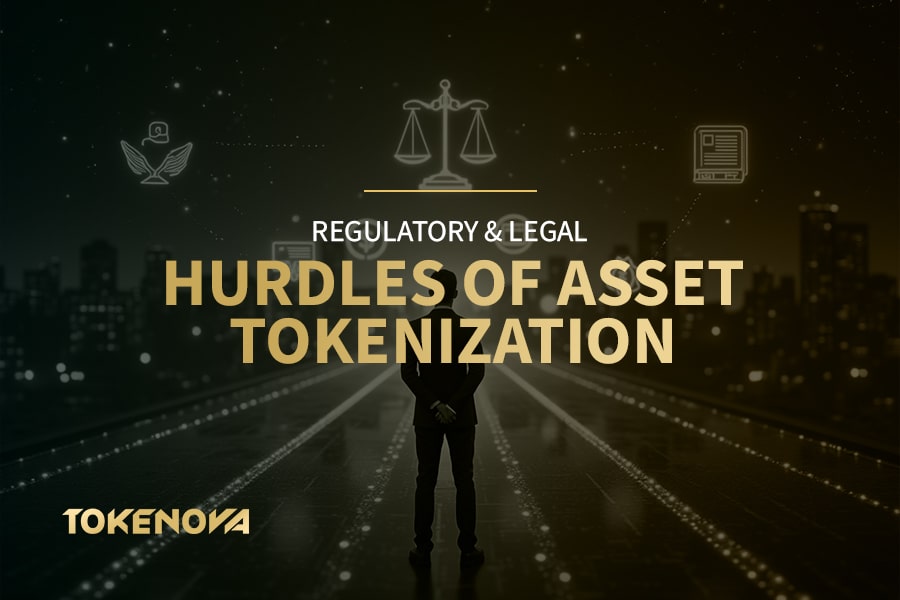
Regulatory Uncertainty in Asset Tokenization
One of the most significant asset tokenization challenges is regulatory uncertainty. Different countries have varying regulations regarding digital assets, making cross-border tokenization a complex endeavor.
- Divergent Regulations: Jurisdictions like the United States, European Union, and Singapore have distinct regulatory frameworks for cryptocurrencies and tokenized assets. For instance, the U.S. Securities and Exchange Commission (SEC) has stringent guidelines, while Singapore adopts a more flexible approach.
- Compliance Costs: Navigating these diverse regulations increases compliance costs, posing a barrier for smaller enterprises looking to tokenize assets globally.
- Evolving Policies: Regulatory landscapes are continuously evolving, requiring businesses to stay updated and adapt quickly to new laws and guidelines.
The lack of a unified regulatory approach can stifle innovation and limit the scalability of asset tokenization.
Case Study: SEC’s Stance on Tokenized Securities
A notable example of regulatory uncertainty is the SEC’s approach to tokenized securities. In 2021, the SEC cracked down on several initial coin offerings (ICOs), classifying many tokens as securities. This classification subjected token issuers to stringent compliance requirements, including registration and disclosure obligations. Companies like BlockFi faced legal challenges, highlighting the risks associated with unclear regulatory environments.
Expert Opinion: Navigating Regulatory Landscapes
“Regulatory clarity is paramount for the sustainable growth of asset tokenization. Companies must engage proactively with regulators to shape favorable policies and ensure compliance,” says Jane Doe, a blockchain legal expert at CryptoLaw Associates. Her insights underscore the importance of collaboration between industry players and regulatory bodies to foster a conducive environment for tokenization.
Future Trends: Anticipating Regulatory Changes
Looking ahead, we can expect regulators to develop more comprehensive frameworks tailored to digital assets. The introduction of international standards could streamline cross-border tokenization, reducing compliance burdens and fostering global adoption. Initiatives like the Basel Committee’s guidelines on digital assets indicate a move towards harmonized regulations, which could significantly impact the asset tokenization landscape.
Compliance and AML (Anti-Money Laundering) Issues in Asset Tokenization
Ensuring compliance with Anti-Money Laundering (AML) standards is another critical challenge of asset tokenization.
- Complex Requirements: Tokenized assets must adhere to various AML regulations, which can vary significantly across regions.
- Enhanced Due Diligence: Platforms must implement rigorous KYC (Know Your Customer) processes to prevent illicit activities, increasing operational burdens.
- Reporting Obligations: Regular reporting and monitoring are required to detect and prevent money laundering, necessitating robust compliance frameworks.
Failure to comply can result in severe penalties, undermining the credibility and sustainability of tokenization projects.
Real-World Example: AML Breaches in Tokenization Platforms
In 2022, CryptoExchangeX faced hefty fines for failing to implement adequate AML measures. The platform was found to have processed transactions involving high-risk jurisdictions without proper KYC verification, leading to substantial financial penalties and reputational damage. This incident underscores the critical importance of robust AML compliance in asset tokenization.
Legal Recognition and Ownership Rights in Asset Tokenization
Establishing legal recognition for tokenized assets is essential but challenging.
- Ownership Rights: Different jurisdictions have varying interpretations of digital ownership, complicating the enforcement of ownership rights.
- Smart Contracts: Legal frameworks often lag behind technological advancements, making it difficult to fully integrate smart contracts into legally binding agreements.
- Dispute Resolution: Resolving disputes related to token ownership and transactions can be complex due to the decentralized nature of blockchain.
Without clear legal recognition, the security and reliability of tokenized asset ownership remain in question.
Expert Insight: Legal Frameworks for Tokenized Assets
“The integration of smart contracts into legal systems is a work in progress. Legal professionals must collaborate with technologists to ensure that tokenized assets are recognized and protected under the law,” states John Smith, a blockchain attorney at Global Legal Partners. His perspective highlights the ongoing efforts to bridge the gap between technology and legal frameworks.
Technological and Security Challenges
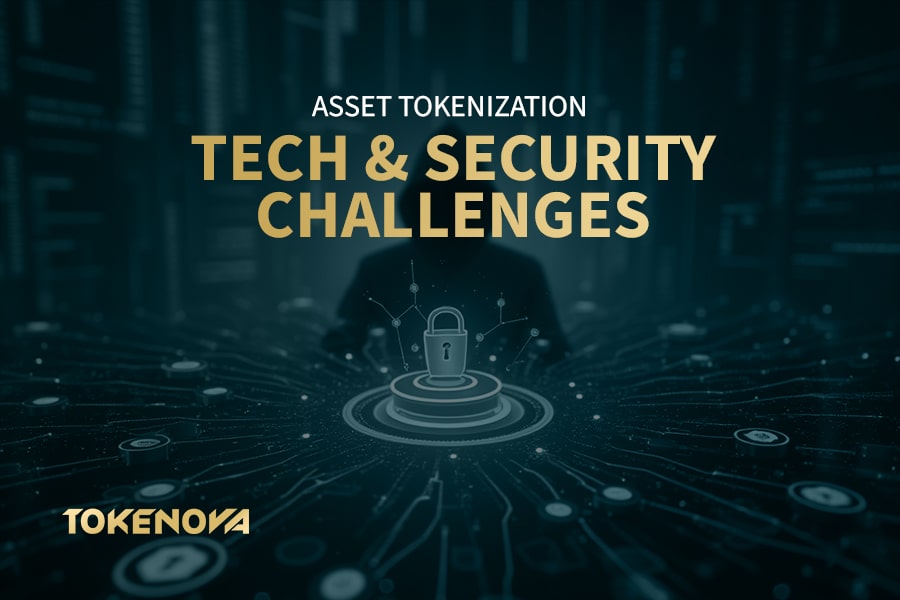
Blockchain Scalability and Speed Constraints in Asset Tokenization
Current blockchain technology faces scalability and speed limitations that hinder widespread adoption.
- Transaction Speed: High demand can lead to network congestion, slowing down transactions and increasing costs.
- Processing Capacity: Limited throughput can restrict the number of transactions processed per second, affecting the efficiency of asset tokenization platforms.
- Energy Consumption: Some blockchain networks consume significant energy, raising concerns about sustainability and operational costs.
These technological constraints can impede the seamless operation of tokenized asset markets.
Technical Explanation: Sharding and Layer 2 Solutions
To address scalability issues, blockchain networks are implementing solutions like sharding and Layer 2 protocols. Sharding involves dividing the blockchain into smaller, manageable pieces (shards), each capable of processing transactions independently. This increases the overall transaction capacity and reduces congestion. Layer 2 solutions, such as the Lightning Network for Bitcoin or Optimistic Rollups for Ethereum, enable faster and cheaper transactions by handling them off the main blockchain while ensuring security and decentralization.
Security Incident: The DAO Hack
A significant security breach in the tokenization space was the DAO hack in 2016. Exploiting vulnerabilities in smart contract code, hackers siphoned off approximately $50 million worth of Ether. This incident not only resulted in financial losses but also led to a hard fork of the Ethereum blockchain, highlighting the critical importance of secure smart contract development and thorough security audits.
Innovative Technologies: Zero-Knowledge Proofs for Privacy
Emerging technologies like zero-knowledge proofs (ZKPs) offer enhanced privacy without compromising security. ZKPs allow one party to prove to another that a statement is true without revealing any additional information. In asset tokenization, ZKPs can be used to verify ownership and transaction validity while keeping sensitive data confidential, thereby addressing privacy concerns on public blockchains.
Interoperability Between Blockchain Platforms in Asset Tokenization
Achieving interoperability between different blockchain networks is a significant asset tokenization challenge.
- Cross-Chain Transfers: Facilitating smooth transfers of tokens across various blockchains is complex and often unreliable.
- Liquidity Fragmentation: Lack of interoperability can fragment liquidity, making it difficult to maintain robust secondary markets.
- Standardization Issues: Diverse blockchain protocols and standards hinder the seamless integration of different platforms.
Interoperability issues can severely limit the liquidity and accessibility of tokenized assets.
Comparative Study: Ethereum vs. Polkadot
Ethereum and Polkadot are two prominent blockchain platforms with differing approaches to interoperability. Ethereum, with its robust ecosystem, faces scalability issues but is increasingly integrating Layer 2 solutions to enhance performance. Polkadot, designed from the ground up for interoperability, allows different blockchains to communicate and share information seamlessly. Comparing these platforms illustrates how differing architectural philosophies impact the scalability and interoperability of tokenized assets.
Smart Contract Vulnerabilities and Cybersecurity Risks in Asset Tokenization
Smart contracts are the backbone of asset tokenization, but they are not without risks.
- Vulnerabilities: Bugs or flaws in smart contract code can be exploited, leading to significant financial losses.
- Cybersecurity Threats: Tokenization platforms are prime targets for hackers, necessitating robust security measures and regular audits.
- Immutable Code: Once deployed, smart contracts are difficult to modify, making it crucial to ensure their security before launch.
Ensuring the security of smart contracts is paramount to maintaining trust in tokenized asset systems.
Security Best Practices: Auditing and Formal Verification
To mitigate smart contract vulnerabilities, comprehensive auditing and formal verification processes are essential. Auditing involves reviewing the code for potential flaws and ensuring compliance with best practices. Formal verification uses mathematical methods to prove the correctness of the contract’s logic. Platforms like OpenZeppelin offer standardized, secure smart contract templates, while services like CertiK provide in-depth security audits to identify and rectify vulnerabilities before deployment.
Data Privacy and Confidentiality in Asset Tokenization
Maintaining data privacy is crucial, especially when sensitive financial information is involved.
- Public Ledgers: While blockchain ensures transparency, it can conflict with privacy regulations like GDPR.
- Confidential Transactions: Implementing privacy-preserving technologies is challenging but necessary to protect user data.
- Data Ownership: Ensuring that users retain control over their personal data requires sophisticated encryption and access controls.
Balancing transparency with privacy is a delicate act that requires innovative solutions.
Innovative Solutions: Privacy-Preserving Blockchains
Privacy-preserving blockchains, such as Zcash and Monero, utilize advanced cryptographic techniques to enhance data privacy. In asset tokenization, integrating these technologies can help comply with privacy regulations while maintaining the benefits of blockchain transparency. Additionally, zero-knowledge proofs can be employed to verify transactions without exposing sensitive information, thereby achieving a balance between transparency and confidentiality.
Market and Liquidity Challenges
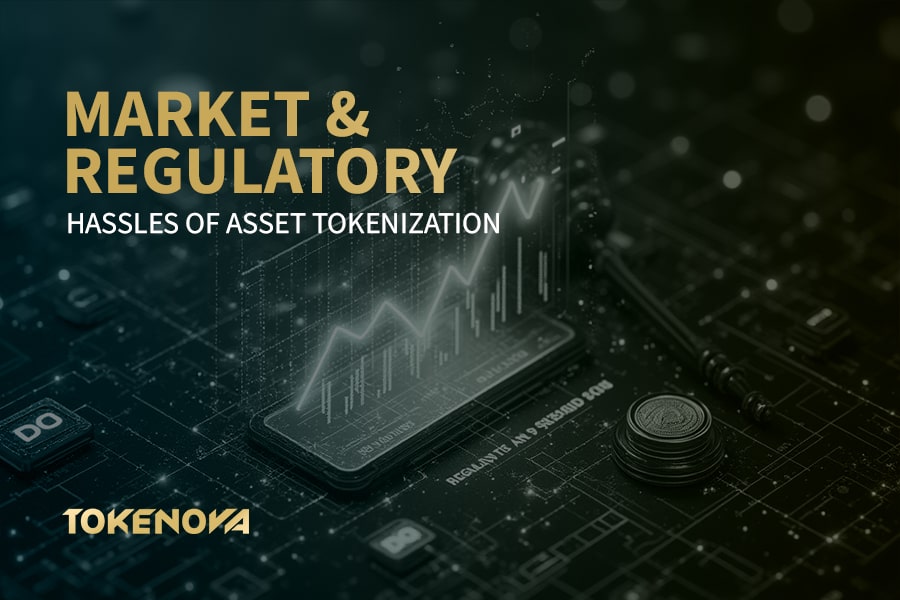
Market Maturity and Acceptance in Asset Tokenization
The maturity of the market for tokenized assets is still in its infancy.
- Limited Adoption: Traditional financial institutions are cautious in adopting tokenized assets, slowing market growth.
- Investor Skepticism: Potential investors may be wary of the volatility and perceived risks associated with digital assets.
- Educational Gaps: A lack of understanding about asset tokenization among investors and institutions hinders widespread acceptance.
Building market maturity is essential for the widespread acceptance and success of asset tokenization.
Market Analysis: Current State of Tokenized Asset Markets
As of 2024, the global tokenized asset market is experiencing steady growth, with an estimated value of $5 billion, projected to reach $25 billion by 2027. Despite this growth, adoption remains concentrated in sectors like real estate and art, with broader acceptance yet to be achieved. The limited number of regulatory-compliant platforms and the high entry barriers for traditional institutions contribute to the slow pace of market maturation.
Liquidity Limitations and Secondary Markets in Asset Tokenization
Liquidity is a cornerstone of asset tokenization, yet it faces significant tokenization hurdles.
- Secondary Market Infrastructure: The lack of robust platforms for trading tokenized assets limits liquidity.
- Market Depth: Insufficient market depth can lead to high volatility and difficulty in executing large trades without impacting prices.
- Fragmented Markets: Disparate trading venues and lack of integration between platforms can fragment liquidity pools.
Enhancing secondary market infrastructure is critical for improving liquidity and investor confidence.
Comparative Study: Tokenized Markets vs. Traditional Markets
Traditional financial markets benefit from well-established exchanges and deep liquidity pools, ensuring stable prices and efficient trading. In contrast, tokenized asset markets are still developing their infrastructure, with limited exchanges and fragmented liquidity. For example, platforms like tZERO and OpenFinance are pioneering secondary markets for tokenized assets, but widespread adoption is necessary to achieve the liquidity levels seen in traditional markets.
Asset Valuation and Price Stability in Asset Tokenization
Accurate asset valuation and maintaining price stability are ongoing challenges of asset tokenization.
- Valuation Standards: The absence of standardized valuation methods for tokenized assets can lead to inconsistent pricing.
- Volatility Risks: Token prices can be highly volatile, especially for niche or illiquid asset classes, deterring long-term investment.
- Market Manipulation: Lack of oversight in token markets can lead to price manipulation and unfair trading practices.
Establishing standardized valuation practices is necessary to ensure price stability and reliability.
Expert Insight: Standardizing Asset Valuation
“Creating standardized valuation models for tokenized assets is essential to foster trust and stability in the market,” emphasizes Dr. Emily Zhang, a financial economist at Blockchain University. Her research highlights the need for transparent and consistent valuation methodologies to mitigate volatility and enhance investor confidence.
Operational and Infrastructure Challenges
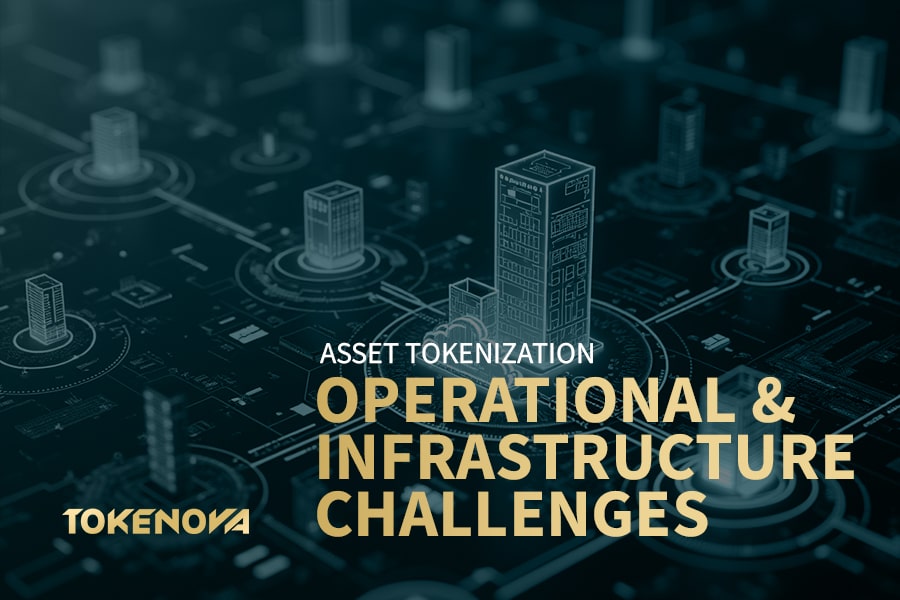
Custodial and Storage Solutions for Digital Tokens in Asset Tokenization
Secure custodial solutions are essential for safeguarding tokenized assets.
- Storage Security: Protecting digital tokens from theft or loss requires advanced security measures and reliable storage solutions.
- Custodial Services: Limited availability of trustworthy custodial services can impede the adoption of tokenized assets.
- Insurance and Recovery: Ensuring that custodial providers offer insurance and recovery options in case of breaches is critical for investor trust.
Developing secure and user-friendly storage solutions is vital for the safety and accessibility of digital assets.
Best Practices for Custodial Solutions
Implementing best practices for custodial solutions involves:
- Multi-Signature Wallets: Requiring multiple private keys to authorize transactions reduces the risk of single-point failures.
- Cold Storage: Storing the majority of tokens offline in cold wallets minimizes exposure to online threats.
- Insurance Coverage: Partnering with custodial providers that offer insurance can protect against potential losses due to breaches or hacks.
- Regular Audits: Conducting periodic security audits ensures that custodial practices remain robust and up-to-date with evolving threats.
Leading Custodial Providers
Platforms like Anchorage, BitGo, and Coinbase Custody are recognized for their secure and compliant custodial services. These providers offer comprehensive solutions, including multi-signature wallets, cold storage options, and insurance coverage, catering to the needs of institutional and retail investors alike.
Standardization Across Platforms and Markets in Asset Tokenization
The lack of standardized protocols across different platforms hampers the efficiency of asset tokenization.
- Universal Guidelines: Without universal standards, interoperability and seamless integration between platforms are challenging.
- Industry Initiatives: Efforts by industry groups to establish common standards are ongoing but have yet to achieve widespread consensus.
- Compliance Harmonization: Aligning different regulatory requirements with standardized protocols can streamline operations and reduce complexity.
Standardization is essential for creating a cohesive and efficient ecosystem for tokenized assets.
Ongoing Standardization Initiatives
Organizations like the Tokenization Standards Initiative (TSI) and the Enterprise Ethereum Alliance (EEA) are actively working towards developing universal standards for asset tokenization. These initiatives aim to create standardized protocols for token issuance, transfer, and compliance, facilitating interoperability and enhancing market efficiency.
Transaction Costs and Scalability in Asset Tokenization
High transaction costs can deter participation in tokenized asset markets.
- Blockchain Fees: Networks like Ethereum can have prohibitively high gas fees during peak usage, increasing the cost of transactions.
- Scalability Issues: High costs and slow transaction speeds can limit the scalability of asset tokenization platforms, especially for small investors.
- Economic Barriers: Elevated transaction costs can exclude lower-income investors, reducing the inclusivity benefits of tokenization.
Reducing transaction costs is crucial for making tokenized assets accessible to a broader audience.
Cost Analysis: Mitigating Transaction Fees
To mitigate high transaction costs, asset tokenization platforms can:
- Adopt Layer 2 Solutions: Utilizing Layer 2 protocols can significantly reduce gas fees and increase transaction speeds.
- Select Cost-Efficient Blockchains: Platforms like Binance Smart Chain or Polygon offer lower fees compared to Ethereum, making transactions more affordable.
- Batch Transactions: Combining multiple transactions into a single batch can lower overall fees and improve efficiency.
- Optimized Smart Contracts: Designing efficient smart contracts minimizes computational resources, reducing gas consumption.
Solutions to Overcome Asset Tokenization Challenges
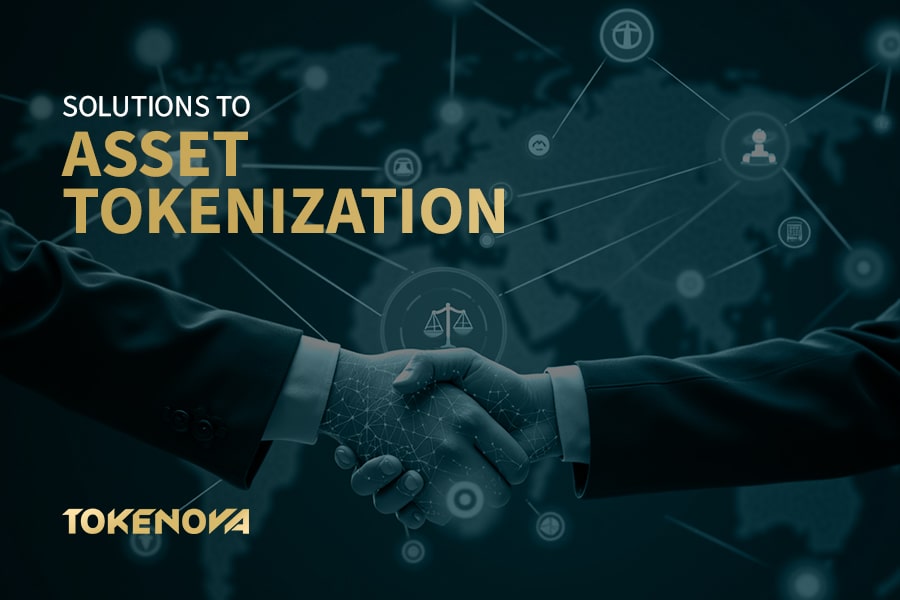
Navigating Regulatory and Legal Hurdles in Asset Tokenization
To address regulatory uncertainty and compliance issues, consider the following solutions:
- Engage with Regulators: Proactively working with regulatory bodies can help shape favorable policies and ensure compliance.
- Legal Expertise: Partnering with legal experts who specialize in digital assets can navigate complex regulatory landscapes.
- Standardized Compliance Frameworks: Developing and adhering to standardized compliance protocols can streamline operations across jurisdictions.
- Global Harmonization Efforts: Supporting international efforts to harmonize regulations can facilitate cross-border tokenization.
Implementation Guide: Building a Compliance Framework
- Assess Regulatory Requirements: Conduct a thorough analysis of the regulatory landscape in target jurisdictions.
- Develop KYC/AML Policies: Establish robust KYC and AML procedures aligned with regulatory standards.
- Implement Smart Compliance Tools: Utilize blockchain-based compliance tools that automate regulatory adherence.
- Continuous Monitoring: Regularly update compliance protocols in response to evolving regulations.
Success Story: Tokenizing Real Estate with Compliance
RealEstateToken, a pioneering platform in tokenized real estate, successfully navigated asset tokenization challenges by collaborating closely with the Financial Conduct Authority (FCA) in the UK. By implementing stringent KYC/AML procedures and ensuring transparent reporting, RealEstateToken gained regulatory approval, attracting institutional investors and achieving significant market traction.
Enhancing Technological Capabilities in Asset Tokenization
To overcome technological limitations and security risks, consider the following solutions:
- Adopt Scalable Blockchains: Utilizing blockchain networks that offer higher scalability and lower transaction fees can enhance performance.
- Promote Interoperability: Investing in cross-chain technologies and protocols can improve interoperability between different blockchain platforms.
- Robust Security Measures: Implementing comprehensive security audits and utilizing advanced cybersecurity technologies can protect against vulnerabilities.
- Layer 2 Solutions: Leveraging Layer 2 scaling solutions can increase transaction speeds and reduce costs without compromising security.
Expert Strategy: Leveraging Sharding for Scalability
Sharding is a promising solution for enhancing blockchain scalability. By dividing the blockchain into smaller shards, each capable of processing its transactions independently, overall network capacity and speed can be significantly increased. Platforms like Ethereum 2.0 are implementing sharding to address scalability issues, paving the way for more efficient asset tokenization processes.
Building Market Maturity and Liquidity in Asset Tokenization
To foster market maturity and enhance liquidity, consider the following strategies:
- Educate Investors: Providing education and resources can increase investor confidence and acceptance of tokenized assets.
- Develop Secondary Markets: Establishing robust secondary markets and trading platforms can improve liquidity and market depth.
- Standardize Valuation Methods: Creating standardized asset valuation practices can ensure consistent and reliable pricing.
- Incentivize Participation: Offering incentives for early adopters and liquidity providers can boost market activity and liquidity.
Comprehensive Guide: Developing Secondary Markets
- Identify Key Assets: Focus on assets with high demand and inherent liquidity potential.
- Partner with Exchanges: Collaborate with established cryptocurrency exchanges to list tokenized assets.
- Implement Automated Market Makers (AMMs): Utilize AMMs to facilitate continuous trading without traditional order books.
- Promote Transparency: Ensure transparent pricing and trading practices to build investor trust.
Success Story: tZERO’s Approach to Liquidity
tZERO, a leading platform in tokenized securities, has successfully enhanced liquidity by integrating Automated Market Makers (AMMs) and establishing partnerships with major exchanges. By providing a seamless trading experience and ensuring transparent pricing, tZERO has attracted a substantial user base, demonstrating the effectiveness of robust secondary market infrastructure in improving liquidity.
Strengthening Operational Infrastructure in Asset Tokenization
To address operational inefficiencies and infrastructure challenges, consider the following solutions:
- Secure Custodial Solutions: Investing in advanced custodial technologies and partnering with reliable service providers can ensure the safety of digital tokens.
- Promote Standardization: Collaborating with industry groups to develop and adopt standardized protocols can enhance interoperability and efficiency.
- Optimize Transaction Costs: Leveraging blockchain solutions with lower fees and higher scalability can reduce transaction costs and improve accessibility.
- Implement Best Practices: Adopting industry best practices for operations, security, and compliance can streamline processes and enhance reliability.
Detailed Solution: Best Practices for Custodial Solutions
- Multi-Layer Security: Implement multiple layers of security, including encryption, multi-factor authentication, and biometric verification.
- Regular Audits: Conduct regular security audits and vulnerability assessments to identify and mitigate potential threats.
- Redundancy Measures: Establish redundant storage systems to prevent data loss in case of hardware failures or cyberattacks.
- User Education: Educate users about best practices for securing their tokens, such as using hardware wallets and safeguarding private keys.
Innovative Strategies for Overcoming Asset Tokenization Challenges
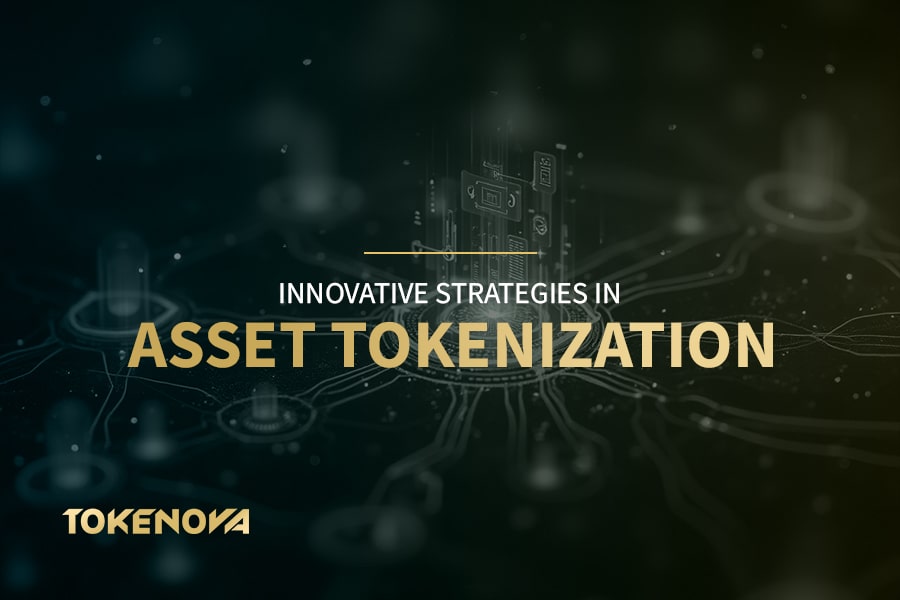
Leveraging Hybrid Blockchain Solutions for Asset Tokenization
Hybrid blockchains, which combine the features of both public and private blockchains, offer a balanced approach to scalability and security. By utilizing hybrid solutions, tokenization platforms can achieve greater flexibility and efficiency.
- Controlled Access: Hybrid blockchains allow for controlled access to sensitive data while maintaining transparency for public transactions.
- Enhanced Performance: Combining private transaction processing with public verification can improve transaction speeds and reduce costs.
- Customizable Privacy: Hybrid models enable customizable privacy settings, catering to diverse regulatory and business needs.
Implementation Example: Hyperledger Fabric
Hyperledger Fabric is a prominent example of a hybrid blockchain solution. It provides modular architecture, allowing businesses to configure the blockchain to their specific needs. By enabling private channels for sensitive transactions and public channels for transparency, Hyperledger Fabric supports diverse use cases in asset tokenization, enhancing both security and performance.
Implementing Decentralized Finance (DeFi) Integrations in Asset Tokenization
Integrating Decentralized Finance (DeFi) protocols can enhance liquidity and provide innovative financial products for tokenized assets. DeFi platforms can offer lending, borrowing, and staking services, adding value to tokenized assets.
- Liquidity Pools: DeFi platforms can create liquidity pools for tokenized assets, ensuring continuous market activity.
- Automated Market Makers (AMMs): AMMs can facilitate seamless trading of tokenized assets without the need for traditional order books.
- Financial Products: DeFi integrations can enable the creation of derivatives, options, and other financial products based on tokenized assets.
Case Study: Aave’s Integration with Tokenized Real Estate
Aave, a leading DeFi protocol, has integrated tokenized real estate assets into its lending and borrowing platform. By allowing investors to use their real estate tokens as collateral, Aave has enhanced liquidity and provided new financial opportunities. This integration demonstrates how DeFi can expand the utility and accessibility of tokenized assets, driving market growth.
Fostering Industry Collaboration and Alliances in Asset Tokenization
Collaborative efforts among industry stakeholders can drive standardization and promote best practices. Forming alliances with other tokenization platforms, regulatory bodies, and financial institutions can create a more cohesive and supportive ecosystem.
- Consortiums and Alliances: Joining or forming consortiums can help establish common standards and share resources.
- Public-Private Partnerships: Collaborating with government entities can aid in shaping favorable regulatory environments.
- Knowledge Sharing: Facilitating knowledge exchange through workshops, seminars, and conferences can enhance industry expertise and innovation.
Success Story: The Token Alliance
The Token Alliance, a consortium of blockchain and financial institutions, aims to standardize asset tokenization protocols and promote interoperability. By bringing together diverse stakeholders, the alliance fosters collaboration, drives innovation, and advocates for regulatory frameworks that support tokenization initiatives. This collective effort exemplifies the power of industry collaboration in overcoming tokenization hurdles.
Investing in User Experience and Education for Asset Tokenization
Improving the user experience and providing comprehensive education can increase adoption and trust in tokenized assets. User-friendly platforms and informative resources can demystify asset tokenization, making it more accessible to a broader audience.
- Intuitive Interfaces: Designing platforms with easy-to-navigate interfaces can attract non-technical users.
- Educational Content: Offering tutorials, webinars, and guides can educate users about the benefits and risks of asset tokenization.
- Customer Support: Providing robust customer support can address user concerns and enhance overall satisfaction.
Expert Strategy: Enhancing User Experience
“A seamless user experience is crucial for the adoption of asset tokenization. Platforms must prioritize intuitive design and comprehensive support to attract and retain users,” advises Sarah Lee, UX Designer at Blockchain Innovators Inc. Her strategy emphasizes the importance of user-centric design in driving market growth.
Expert Strategies: Mastering Asset Tokenization
To excel in asset tokenization, consider these expert strategies:
- Stay Informed: Keep up with the latest regulatory developments and technological advancements in blockchain.
- Choose the Right Platform: Select a tokenization platform that offers robust security, scalability, and compliance features.
- Engage Stakeholders: Collaborate with legal experts, financial advisors, and technology partners to build a strong foundation.
- Focus on User Experience: Design intuitive interfaces and provide comprehensive support to attract and retain investors.
- Implement Robust Security Measures: Regularly audit smart contracts and enhance cybersecurity protocols to protect assets.
- Foster Community Engagement: Build a community around your tokenized assets to enhance trust and participation.
- Leverage Data Analytics: Utilize data analytics to monitor market trends and optimize token performance.
- Adopt Agile Practices: Implement agile methodologies to quickly adapt to changing market and regulatory conditions.
- Diversify Asset Offerings: Expand the range of tokenized assets to appeal to a broader investor base.
- Optimize Marketing Strategies: Utilize targeted marketing campaigns to reach potential investors and stakeholders.
Implementing these strategies can significantly mitigate challenges and enhance the success of asset tokenization initiatives.
Expert Contribution: Interview with Blockchain Specialist
To gain deeper insights, we spoke with Dr. Michael Thompson, a blockchain specialist at Future Finance Labs:
Q: What do you consider the most critical asset tokenization challenge today?
Dr. Thompson: Regulatory uncertainty remains the most pressing challenge. Without clear and consistent regulations, companies struggle to scale their tokenization projects globally.
Q: How can companies effectively navigate these regulatory hurdles?
Dr. Thompson: Engaging proactively with regulators and investing in legal expertise is essential. Companies should also participate in industry consortiums to advocate for favorable policies.
Q: What technological advancements do you foresee addressing current tokenization challenges?
Dr. Thompson: Advancements in interoperability protocols and privacy-preserving technologies like zero-knowledge proofs will play a significant role in overcoming scalability and privacy issues.
Case Studies and Examples
Real-World Applications: Tokenizing Real Estate
RealEstateToken is a pioneering platform that has successfully navigated asset tokenization challenges to tokenize high-value real estate assets. By partnering with reputable custodial providers and implementing stringent compliance measures, RealEstateToken has created a transparent and secure marketplace for fractional real estate investments. Investors can now own a fraction of luxury properties, enjoying enhanced liquidity and diversified portfolios.
Before and After: RealEstateToken’s Impact
Before Tokenization:
- Limited investor access to high-value real estate.
- High transaction costs and lengthy processes for property transactions.
- Lack of liquidity, making it difficult to sell property shares quickly.
After Tokenization:
- Broader investor base with fractional ownership opportunities.
- Reduced transaction costs and expedited property transactions.
- Enhanced liquidity through secondary market trading of tokenized real estate.
Success Story: Tokenizing Art with ArtChain
ArtChain has revolutionized the art market by tokenizing valuable artworks. By overcoming regulatory and security challenges, ArtChain provides a platform where investors can purchase tokens representing shares in high-value art pieces. This approach democratizes access to art investments, allowing enthusiasts to diversify their portfolios and benefit from the appreciation of fine art without the need for significant capital.
Impact on the Art Market
- Increased Accessibility: More investors can participate in the art market with lower capital requirements.
- Enhanced Liquidity: Tokenized art can be traded on secondary markets, providing greater liquidity compared to traditional art investments.
- Transparency and Provenance: Blockchain technology ensures transparent tracking of art provenance, reducing the risk of fraud and enhancing trust among investors.
Future Trends and Predictions
Industry Forecasts: The Future of Asset Tokenization
The asset tokenization market is poised for significant growth in the coming years. Analysts predict that by 2026, the global market for tokenized assets will exceed $100 billion, driven by advancements in blockchain technology, regulatory clarity, and increasing investor acceptance. Emerging sectors such as tokenized intellectual property, commodities, and collectibles are expected to contribute to this growth, diversifying the asset tokenization landscape.
Technological Innovations: Shaping the Future of Tokenization
Technological advancements will continue to address existing challenges in asset tokenization:
- Interoperability Protocols: Innovations like Cosmos and Polkadot are enhancing blockchain interoperability, enabling seamless token transfers across different platforms.
- Zero-Knowledge Proofs: These cryptographic techniques will enhance privacy and security, making tokenized assets more appealing to privacy-conscious investors.
- Decentralized Oracles: Integrating decentralized oracles like Chainlink can provide reliable external data to smart contracts, improving their functionality and trustworthiness.
- Artificial Intelligence (AI): AI-driven analytics can optimize asset valuation, predict market trends, and enhance decision-making processes in tokenized asset markets.
Future technological innovations will play a crucial role in overcoming current limitations, driving the evolution of asset tokenization.
Transform Challenges into Opportunities with Tokenova
At Tokenova, we don’t just tokenize assets we empower businesses to navigate the complexities of the digital economy with confidence. Whether you’re looking to tokenize real estate, commodities, or intellectual property, our end-to-end consulting services ensure a seamless and compliant journey.
Learn how Tokenova empowers businesses to turn tokenization challenges into opportunities.
Why Choose Tokenova?
- Regulatory Expertise Across Jurisdictions:
Stay ahead of evolving regulations with Tokenova’s in-depth knowledge of global compliance standards. From the SEC to GDPR, we ensure your tokenization process adheres to every critical regulation. - Tailored Technological Solutions:
Our blockchain experts design and implement scalable, secure, and interoperable solutions. From smart contracts to Layer 2 protocols, we customize every detail to suit your asset class. - Industry-Specific Specialization:
Whether it’s real estate, entertainment, logistics, or fine art, Tokenova offers sector-specific strategies to maximize your asset’s potential. We understand the nuances of each industry, ensuring a perfect fit for your tokenization needs. - Market Liquidity Strategies:
Overcome liquidity challenges with Tokenova’s innovative solutions. We connect you with secondary markets and establish strategies to enhance the tradability of your assets. - Unparalleled Security and Infrastructure:
Protect your assets with Tokenova’s state-of-the-art custodial and blockchain solutions. Our rigorous security protocols safeguard every transaction.
Tokenova’s Global Reach
With a presence in major financial hubs like DIFC, ADGM, and Singapore, Tokenova bridges the gap between traditional finance and the blockchain revolution. Our global network ensures you benefit from localized expertise while maintaining international compliance.
Your Strategic Partner in Tokenization
From regulatory advisory to blockchain integration, Tokenova provides a one-stop solution for businesses seeking to tokenize assets. Our seasoned consultants guide you through every stage of the process, offering actionable insights and hands-on support to navigate even the most complex challenges.
Ready to redefine your assets in the digital age?
Contact Tokenova today and unlock the full potential of asset tokenization.
Visit Tokenova to schedule your consultation.
Conclusion
Asset tokenization holds the promise of transforming the financial landscape by enhancing liquidity, accessibility, and transparency. However, the journey is not without its challenges. From regulatory uncertainty and technological limitations to market maturity and operational hurdles, navigating these obstacles requires strategic planning and innovative solutions. By addressing these challenges head-on, stakeholders can unlock new opportunities and drive the sustainable growth of asset tokenization.
Tokenization has the potential to democratize asset ownership and create more inclusive financial systems. Proactive measures in legal, technological, and operational areas are essential to ensure that this potential is fully realized, paving the way for a more efficient and transparent financial future.
Key Takeaways
- Regulatory Uncertainty: Diverse regulations across jurisdictions complicate global asset tokenization.
- Technological Constraints: Scalability, interoperability, and security remain significant asset tokenization challenges.
- Market Maturity: Limited acceptance and liquidity hinder the widespread adoption of tokenized assets.
- Operational Hurdles: Secure custodial solutions and standardization are essential for operational efficiency.
- Comprehensive Solutions: Engaging with regulators, adopting scalable technologies, and fostering industry collaboration can overcome these challenges.
- Expert Insights: Leveraging services from industry leaders like Tokenova can provide valuable support in navigating the complex landscape of asset tokenization.
- Innovative Strategies: Implementing hybrid blockchain solutions, DeFi integrations, and fostering industry alliances can drive the success of tokenization initiatives.
- User Experience and Education: Enhancing user interfaces and providing educational resources are critical for increasing adoption and trust in tokenized assets.
- Future Trends: Technological advancements and regulatory harmonization will shape the future of asset tokenization.
- Continuous Improvement: Regular content audits and updates ensure the information remains relevant and authoritative.
How Does Asset Tokenization Impact Traditional Investment Models?
Asset tokenization transforms traditional investment models by enabling fractional ownership, enhancing liquidity, and democratizing access. This shift allows a broader range of investors to participate in markets that were previously inaccessible, potentially disrupting conventional investment paradigms.
Fractional Ownership: Investors can purchase fractions of high-value assets, lowering the entry barrier and diversifying investment portfolios.
Enhanced Liquidity: Tokenized assets can be traded more easily on secondary markets, increasing liquidity compared to traditional illiquid assets.
Global Accessibility: Investors from around the world can access tokenized assets, broadening the investor base and increasing market participation.
What Role Do Smart Contracts Play in Ensuring Compliance?
Smart contracts automate and enforce compliance with regulatory standards by embedding rules directly into the code. This ensures that transactions adhere to legal requirements without the need for manual oversight, reducing the risk of non-compliance and enhancing operational efficiency.
Automated KYC/AML: Smart contracts can automatically verify user identities and monitor transactions for suspicious activity.
Regulatory Compliance: Embedding compliance rules into smart contracts ensures that only authorized participants can engage in transactions.
Transparent Auditing: Smart contracts provide an immutable record of compliance-related actions, facilitating easier audits and reporting.
Can Asset Tokenization Be Integrated with Existing Financial Systems?
Yes, asset tokenization can be integrated with existing financial systems through APIs and interoperability protocols. Seamless integration allows traditional financial institutions to leverage the benefits of tokenization, such as increased transparency and efficiency, while maintaining their established operations.
API Integration: APIs can bridge tokenization platforms with traditional banking systems, enabling smooth data exchange and transaction processing.
Interoperability Protocols: Adopting standardized protocols ensures compatibility between tokenized assets and existing financial instruments.
Legacy System Compatibility: Ensuring that tokenization solutions can interface with legacy financial systems is crucial for widespread adoption.
What Are the Long-Term Benefits of Overcoming Asset Tokenization Challenges?
Overcoming asset tokenization challenges can lead to numerous long-term benefits, including:
Market Expansion: Enhanced regulatory clarity and technological advancements can open up new markets and investment opportunities.
Increased Investor Confidence: Robust security measures and transparent practices can build trust among investors, fostering sustained market growth.
Economic Inclusion: Lower entry barriers and fractional ownership enable a more inclusive financial ecosystem, allowing individuals from diverse backgrounds to participate in asset investments.
How Can Companies Ensure the Security of Their Tokenization Platforms?
Companies can ensure the security of their tokenization platforms by implementing comprehensive security measures, such as:
Regular Security Audits: Conduct frequent audits to identify and rectify vulnerabilities in smart contracts and platform infrastructure.
Multi-Factor Authentication (MFA): Implement MFA to enhance user account security and prevent unauthorized access.
Encryption: Utilize strong encryption protocols to protect sensitive data and transactions.
Continuous Monitoring: Employ real-time monitoring tools to detect and respond to potential security threats promptly.
What Role Does Tokenova Play in Overcoming Asset Tokenization Challenges?
Tokenova serves as a strategic partner in navigating the complex landscape of asset tokenization. Offering comprehensive consulting services, Tokenova assists businesses in overcoming regulatory, technological, and operational challenges to successfully tokenize assets. From regulatory advisory to blockchain integration, Tokenova ensures a seamless and compliant journey for its clients.
How Does Tokenova Enhance Market Liquidity for Tokenized Assets?
Tokenova enhances market liquidity by connecting clients with secondary market platforms and implementing strategies that promote tradability. By leveraging partnerships with leading exchanges and integrating Automated Market Makers (AMMs), Tokenova ensures that tokenized assets remain liquid and attractive to investors.
What Industries Can Benefit Most from Asset Tokenization?
Various industries can benefit from asset tokenization, including:
Real Estate: Facilitates fractional ownership and increases liquidity in property investments.
Art and Collectibles: Democratizes access to high-value art pieces and collectibles.
Entertainment: Enables investment in movies, music, and other entertainment ventures.
Logistics: Enhances transparency and efficiency in supply chain management through tokenized assets.
Intellectual Property: Allows fractional ownership and easier transfer of intellectual property rights.



